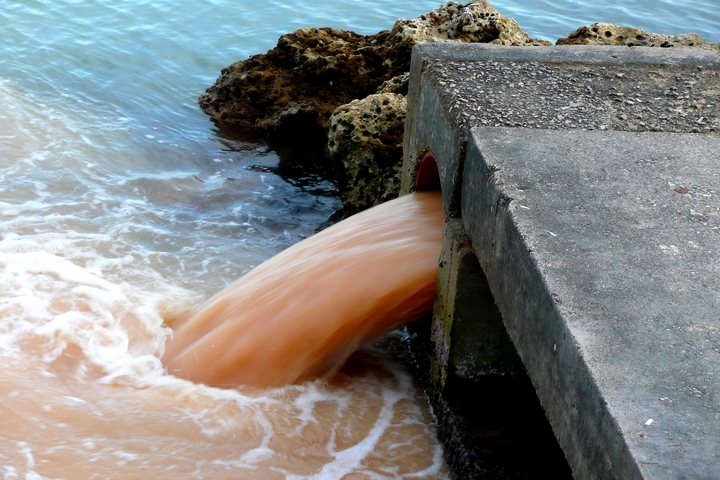
Ever since the crisis in Flint, Michigan, the public has been more concerned than ever about their water supply. The dangers that came with the water in the burgh to this day has not been properly cleaned, and much of the cause of the polluted supply had to do with years of government neglect and corruption.
Insufficient water treatment, lead contaminated water pipes exposed over 100,000 residents to polluted water, the H2O from taps coming out rust brown beginning in 2014. All the lead pipes are in the process of being replaced, expecting to be completed by the year’s end, but the crisis lead to the Federal government declaring a state of emergency.
The disaster in Flint is obviously a worst case scenario, leading to several lawsuits and health issues both mental and physical. However, there are numerous common pollutants to watch out for that are more common and less notable. Here are seven of the most common water pollutants in the world:
1. Groundwater pollutants

Roughly 40 percent of Americans rely on groundwater for their supply. Groundwater during rainfall when it seeps deep into the earth, filling in cracks and the porous spaces of an aquifer. It is then pumped to the earth’s surface for drinking water.
For some more rural communities, groundwater is the only source of freshwater. It can become contaminated when pollutants or pesticides, fertilizers or trash from landfills and septic systems make their way into an aquifer, making it undrinkable. Once polluted, clearing groundwater from contaminants can be next to impossible, making it unsuitable for human consumption for decades.
2. Surface water pollutants

Covering roughly 70 per cent of the planet, surface water comes from rivers and lakes. It makes up 60 per cent of drinking water. Unfortunately, a great deal of that water is in jeopardy.
Half of our rivers and streams and one-third of lakes are unfit for swimming and fishing. Farm waste and fertilizer runoff have affected plants and animals that rely on nutrients from the water to grow, diminishing our food supply.
3. Ocean water pollutants

80 percent of ocean pollution stems from land, be it along the coast or further inland. While chemicals and heavy metals are carried by farms, factories and cities via streams, oceans are also spoiled by oil leaks and plastic blown in by wind or storm drains and sewers. The ocean also absorbs approximately one quarter of all man made carbon emissions.
4. Pathogens

Types of pathogens include bacteria, protazoa or viruses. Coliforms are a bacteria normally found in water at save levels. At those levels, they can actually aid in the detection of other pathogens. When they multiply, however, they can grow dangerous. E. Coli, on the other hand, is always a risk, usually found in water exposed to human or animal waste.
5. Inorganic materials

This common types of water pollutants are precisely what occurred in Flint. Often times, heavy metals like zinc, arsenic, mercury, copper, chromium and barium can wind up in a city’s drinking supply by being leached off the pipes used to transport water, inappropriate waste disposal, increased human activity or industrial accidents.
In small levels, they are typically harmless. In high concentrations, however, they can lead to severe health problems and, in extreme cases, death. For this reason, it is imperative that the inorganic materials are cleaned and filtered thoroughly from the water.
6. Organic materials

Organic material simply refers to molecules that are made up in part by carbon. One of the most common, and volatile, is methyl tert-butyl (MTBE). Formerly used as an air-cleaning gas additive, MTBE has since been banned, though it will be years before contaminated water systems are thoroughly cleansed from the chemical.
These common water pollutants are also incredibly dangerous to consume, leading to leukemia, lymphoma and tumors in testicles, thyroid glands and kidneys. Like E. Coli or lead-lined water, neighborhoods containing MTBE would be wise to switch to bottled water exclusively.
7. Macroscopic pollutants

Most of the pollutants on this list are invisible to the naked eye, but macroscopic objects are pretty easy to spot. The first common pollutant is trash, especially plastic bags. There is actually a floating island of trash – the Great Pacific Island Patch – that’s roughly comprised of 94 per cent microplastics and some 80,000 tons. Due to its low dentistry, however, it is untrackable by satellite or even ships. Despite attempts to clean it by the United Nations Environmental Program, research suggests the pile is rapidly accumulating. It’s currently the size of France.
Other types of macroscopic pollutants include “nurdles” – small, plastic pellets – pieces of wood, metal and even shipwrecks and shipping containers. With the exception of the Great Pacific Patch, this is the most manageable type of waste. It’s crucial, however, to clean it up as rapidly as possible to avoid upsetting aquatic ecosystems and adding to contamination due to the chemical breakdown of these objects.
